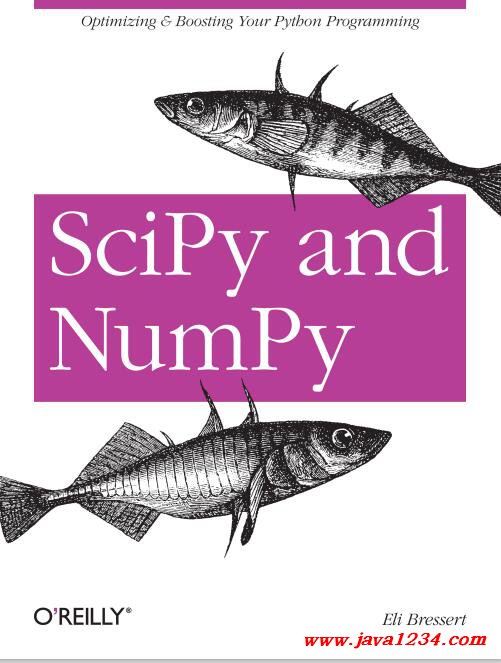| 失效链接处理 |
|
SciPy and NumPy PDF 下载
相关截图:
 主要内容:
2.3 Read and Write
Reading and writing information from data files, be it in text or binary format, is
crucial for scientific computing. It provides the ability to save, share, and read data
that is computed by any language. Fortunately, Python is quite capable of reading and
writing data.
2.3.1 Text Files
In terms of text files, Python is one of the most capable programming languages. Not
only is the parsing robust and flexible, but it is also fast compared to other languages
like C. Here’s an example of how Python opens and parses text information.
# Opening the text file with the 'r' option,
# which only allows reading capability
f = open('somefile.txt', 'r')
# Parsing the file and splitting each line,
# which creates a list where each element of
# it is one line
alist = f.readlines()
# Closing file
f.close()
.
.
.
# After a few operations, we open a new text file
# to write the data with the 'w' option. If there
# was data already existing in the file, it will be overwritten.
f = open('newtextfile.txt', 'w')
# Writing data to file
f.writelines(newdata)
# Closing file
f.close()
Accessing and recording data this way can be very flexible and fast, but there is one
downside: if the file is large, then accessing or modulating the data will be cumbersome
and slow. Getting the data directly into a numpy.ndarray would be the best option. We
can do this by using a NumPy function called loadtxt. If the data is structured with
rows and columns, then the loadtxt command will work very well as long as all the data
is of a similar type, i.e., integers or floats. We can save the data through numpy.savetxt
as easily and quickly as with numpy.readtxt.
import numpy as np
arr = np.loadtxt('somefile.txt')
np.savetxt('somenewfile.txt')
If each column is different in terms of formatting, loadtxt can still read the data, but
the column types need to be predefined. The final construct from reading the data will
12 | Chapter 2: NumPy
9781449305468_text.pdf 20 10/31/12 2:35 PM
be a recarray. Here we run through a simple example to get an idea of how NumPy
deals with this more complex data structure.
# example.txt file looks like the following
#
# XR21 32.789 1
# XR22 33.091 2
table = np.loadtxt('example.txt',
dtype='names': ('ID', 'Result', 'Type'),
'formats': ('S4', 'f4', 'i2'))
# array([('XR21', 32.78900146484375, 1),
# ('XR22', 33.090999603271484, 2)],
# dtype=[('ID', '|S4'), ('Result', '<f4'), ('Type', '<i2')])
Just as in the earlier material covering recarray objects, we can access each column by
its name, e.g., table[’Result’]. Accessing each row is done the same was as with normal
numpy.array objects.
There is one downside to recarray objects, though: as of version NumPy 1.8, there
is no dependable and automated way to save numpy.recarray data structures in text
format. If saving recarray structures is important, it is best to use the matplotlib.mlab3
tools
|




 苏公网安备 32061202001004号
苏公网安备 32061202001004号



